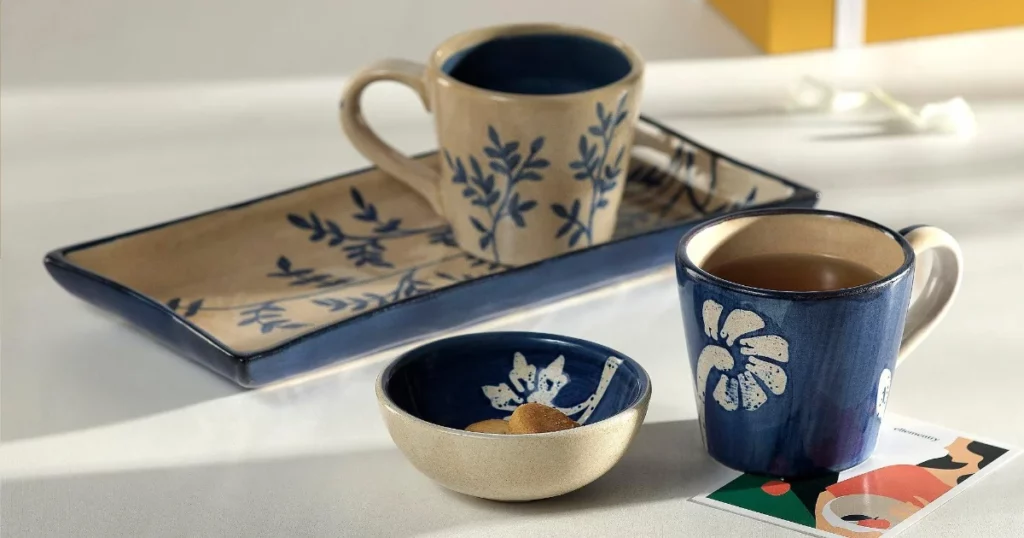No products in the cart.
Blog
Porcelain vs Ceramic Mugs: Which is Better?
When it comes to choosing the perfect mug for your morning coffee or afternoon tea, the debate between porcelain and ceramic often arises. Both materials offer unique characteristics that appeal to different preferences and needs. In this comprehensive guide, we’ll delve into the differences between porcelain and ceramic mugs, exploring their similarities, dissimilarities, advantages, and ideal users to help you make an informed decision.
What are Porcelain Mugs?

Porcelain is a type of ceramic material made from fine clay that’s fired at high temperatures, resulting in a smooth, durable, and non-porous finish. Porcelain mugs are known for their elegant appearance, lightweight feel, and delicate yet sturdy construction. They often feature intricate designs, vibrant colors, and a translucent quality that adds a touch of sophistication to any table setting.
What are Ceramic Mugs?
Ceramic is a broad category encompassing various clay-based materials that are hardened through heat. Ceramic mugs can be crafted from earthenware, stoneware, or even porcelain itself. Unlike porcelain, ceramic mugs may have a more rustic or textured finish, offering a cozy and handmade aesthetic. They come in a wide range of styles, from minimalist to whimsical, making them versatile for any occasion.
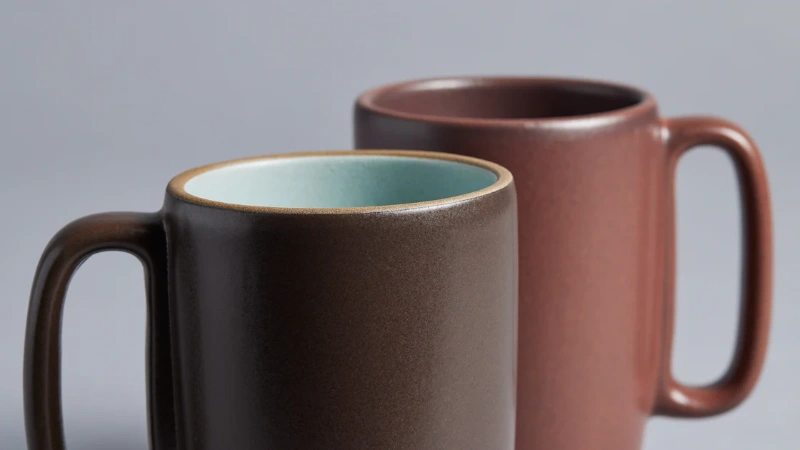
Porcelain vs Ceramic Mugs: What are Similar?
Both porcelain and ceramic mugs share several similarities:
- Heat Retention: Both materials retain heat well, keeping your beverages warmer for longer periods.
- Microwave and Dishwasher Safe: Most porcelain and ceramic mugs are safe for use in the microwave and dishwasher, providing convenience for daily use and cleaning.
- Versatility: Both materials offer a canvas for various designs, patterns, and colors, catering to diverse preferences and aesthetics.
- Durability: When properly cared for, both porcelain and ceramic mugs can withstand regular use without chipping or cracking.
Porcelain vs Ceramic Mugs: What Are Different?
While porcelain and ceramic mugs share similarities, they also have distinct characteristics:
Composition and Manufacturing Process

Porcelain
Porcelain is made from a specific type of clay called kaolin, which is known for its fine particle size and purity. To create porcelain, the kaolin clay is combined with other minerals and fired at temperatures exceeding 2300 degrees Fahrenheit (1260 degrees Celsius). This high firing temperature results in a vitrified material that is dense, smooth, and non-porous.
The vitrification process ensures that the clay particles fuse together, creating a strong and durable structure that is resistant to chipping, scratching, and staining. Additionally, the high firing temperature causes the porcelain to become translucent, allowing light to pass through the material and giving it a distinctive luminous quality.
Ceramic
Ceramic is a broader category that encompasses various clay-based materials, including earthenware, stoneware, and porcelain itself. Unlike porcelain, which is made from a specific type of clay, ceramic mugs can be crafted from different types of clay, each with its own characteristics and firing temperatures.
Earthenware, for example, is fired at lower temperatures and has a porous, rustic appearance, while stoneware is fired at higher temperatures and is known for its durability and earthy texture. Ceramic mugs may also undergo different finishing techniques, such as glazing or painting, to achieve a desired aesthetic.
Weight, Thickness, and Texture
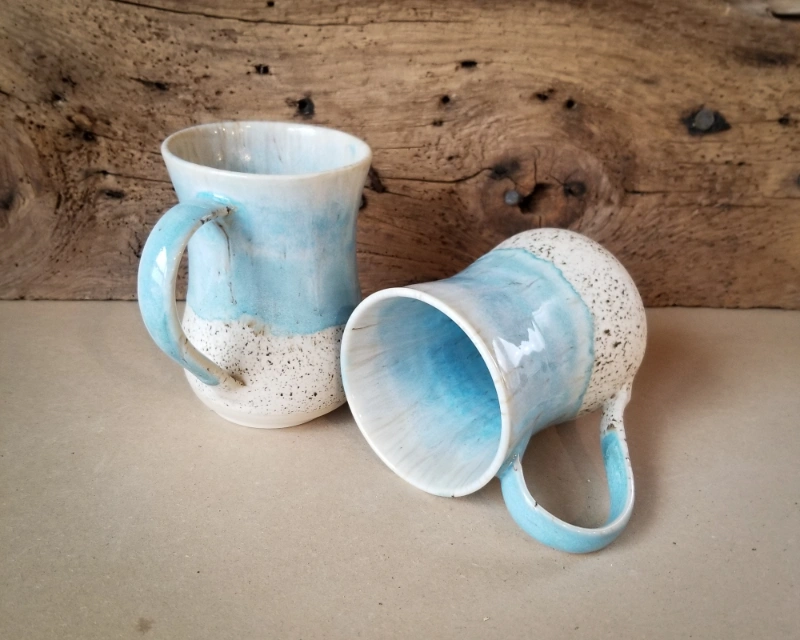
Porcelain
Porcelain mugs are typically lighter and thinner than ceramic mugs due to the fine particle size of the clay and the high firing temperature. The thin walls of porcelain mugs give them a delicate appearance and a refined feel in hand. Additionally, porcelain mugs often have a smooth, glossy finish that feels luxurious to the touch.
Ceramic
Ceramic mugs, on the other hand, can vary widely in weight, thickness, and texture depending on the type of clay used and the firing process. Earthenware mugs tend to be thicker and heavier, with a more rustic texture, while stoneware mugs may have a smoother, more polished surface. Some ceramic mugs feature decorative elements such as embossing, carving, or hand-painting, adding tactile interest and visual appeal.
Translucency and Appearance
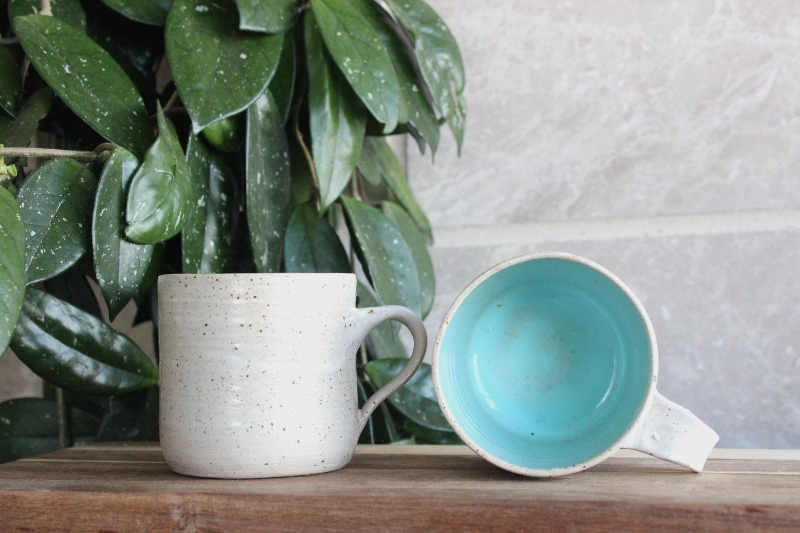
Porcelain
One of the distinguishing characteristics of porcelain is its translucency, which gives it a distinctive luminous quality. When held up to light, porcelain mugs allow light to pass through the material, creating a subtle glow that enhances the beauty of any design or pattern. This translucency is a result of the dense, vitrified structure of porcelain, which causes light to scatter within the material rather than being absorbed or reflected.
Ceramic
Ceramic mugs typically have an opaque appearance, with varying degrees of color saturation and surface texture depending on the type of clay and finishing techniques used. While some ceramic mugs may have a glossy or shiny finish, others may have a matte or textured surface that adds depth and dimension to the design. Unlike porcelain, ceramic mugs do not exhibit translucency, as they are not fired at high enough temperatures to achieve vitrification.
Price and Value

Porcelain
Due to the high cost of production and the perceived value associated with its elegance and refinement, porcelain mugs are often more expensive than ceramic mugs. The labor-intensive manufacturing process, which includes refining the clay, shaping the mugs, and firing them at high temperatures, contributes to the higher price tag of porcelain products. However, many people are willing to invest in porcelain mugs for their timeless beauty and durability.
Ceramic
Ceramic mugs are generally more affordable than porcelain mugs, making them accessible to a broader range of consumers. The lower price point of ceramic mugs is attributed to the lower cost of materials and manufacturing processes involved. While ceramic mugs may lack the translucency and delicacy of porcelain, they offer excellent value for those seeking stylish and functional drinkware without breaking the bank.
What’s Better About Porcelain Mugs?

Porcelain mugs offer several advantages that make them a preferred choice for many:
- Elegance: Porcelain mugs are renowned for their timeless elegance and sophisticated appearance, making them suitable for formal occasions or enhancing the aesthetic of any table setting.
- Durability: Despite their delicate appearance, porcelain mugs are surprisingly durable and resistant to scratching, staining, and odors, ensuring long-lasting enjoyment.
- Heat Retention: Porcelain’s dense composition allows it to retain heat exceptionally well, keeping your beverages at the optimal temperature for longer periods.
- Stain Resistance: The non-porous surface of porcelain makes it less prone to staining compared to some ceramic materials, ensuring that your mug stays pristine with minimal effort.
What’s Better About Ceramic Mugs?
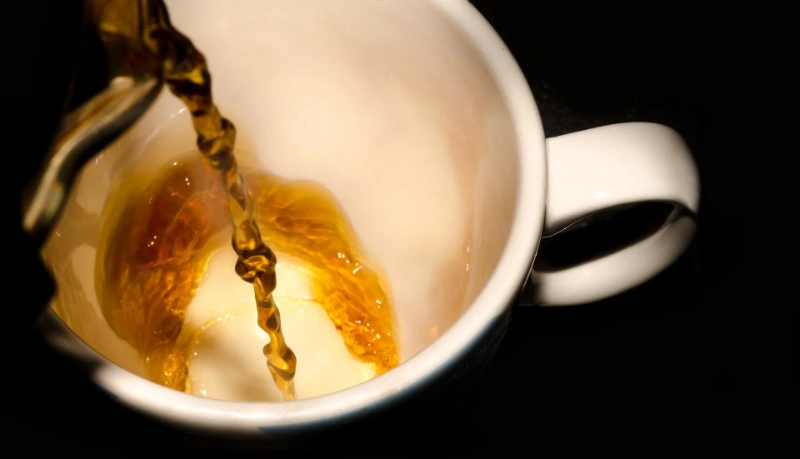
Ceramic mugs also offer unique benefits that cater to different preferences and lifestyles:
- Versatility: Ceramic mugs come in a wide range of styles, textures, and finishes, allowing for greater versatility and personalization to suit individual tastes and preferences.
- Affordability: Compared to porcelain, ceramic mugs are often more affordable, making them accessible to a broader range of consumers without sacrificing quality or style.
- Handcrafted Appeal: Many people appreciate the artisanal charm of ceramic mugs, which often feature handcrafted details, irregularities, and imperfections that add character and warmth to each piece.
- Weight and Thickness: Ceramic mugs may feel more substantial and comforting in hand due to their thicker walls and heavier weight, providing a satisfying tactile experience.
Who Should Get A Porcelain Mug and Why?
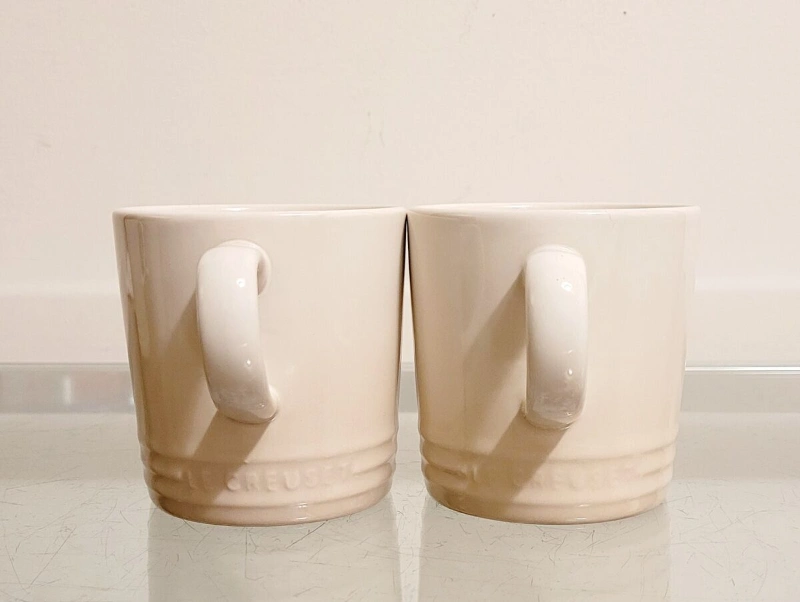
Porcelain mugs are ideal for those who appreciate:
- Elegance and Sophistication: If you enjoy hosting formal gatherings or simply appreciate the finer things in life, porcelain mugs are a perfect choice to elevate your drinking experience.
- Durability with Style: Despite their delicate appearance, porcelain mugs are durable enough to withstand daily use while adding a touch of luxury to your morning routine.
- Minimalist Design: If you prefer sleek, minimalist aesthetics, porcelain mugs offer a timeless and understated elegance that complements any modern décor.
- Special Occasions: Whether it’s a bridal shower, anniversary dinner, or holiday celebration, porcelain mugs add a touch of refinement to any special occasion, making them an excellent choice for gifting or entertaining.
Who Should Get A Ceramic Mug and Why?
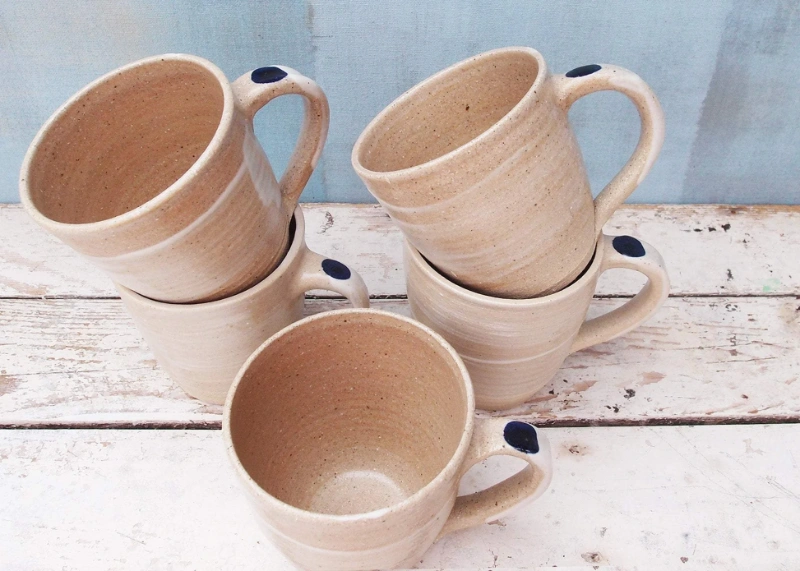
Ceramic mugs are a preferred choice for those who value:
- Versatility and Personalization: With a vast array of designs, textures, and colors available, ceramic mugs offer endless possibilities for expressing your unique personality and style.
- Affordability and Accessibility: Ceramic mugs are more budget-friendly than porcelain, making them an excellent option for everyday use without compromising on quality or aesthetics.
- Artisanal Craftsmanship: If you appreciate the charm of handmade goods, ceramic mugs with their rustic, imperfect beauty are sure to delight your senses and add a cozy, welcoming vibe to your home.
- Comfort and Warmth: The substantial feel and tactile texture of ceramic mugs provide a comforting sensation that enhances the enjoyment of your favorite beverages, whether it’s a hot cup of tea on a chilly evening or a soothing latte to start your day.

FAQs
Can I Put Porcelain and Ceramic Mugs in the Microwave and Dishwasher?
Yes, most porcelain and ceramic mugs are microwave and dishwasher safe. However, it’s always best to check the manufacturer’s recommendations to ensure proper care and longevity of your mugs.
Are Porcelain Mugs More Fragile Than Ceramic Mugs?
While porcelain mugs may appear more delicate due to their thinner walls and lighter weight, they are actually quite durable and resistant to chipping and scratching. However, ceramic mugs with a thicker construction may offer added durability for those prone to accidents.
Do Porcelain Mugs Retain Heat Better Than Ceramic Mugs?
Yes, porcelain’s dense composition allows it to retain heat more effectively than most ceramic materials, keeping your beverages warmer for longer periods.

Conclusion
In the eternal debate of porcelain vs ceramic mugs, there’s no definitive answer to which is better. Both materials offer unique qualities and advantages that appeal to different preferences and lifestyles. Whether you prefer the elegance and refinement of porcelain or the versatility and artisanal charm of ceramic, the perfect mug is ultimately a matter of personal choice. So, whether you’re savoring a quiet moment alone or sharing a cup of coffee with loved ones, choose the mug that speaks to you and enhances your drinking experience, one sip at a time.


